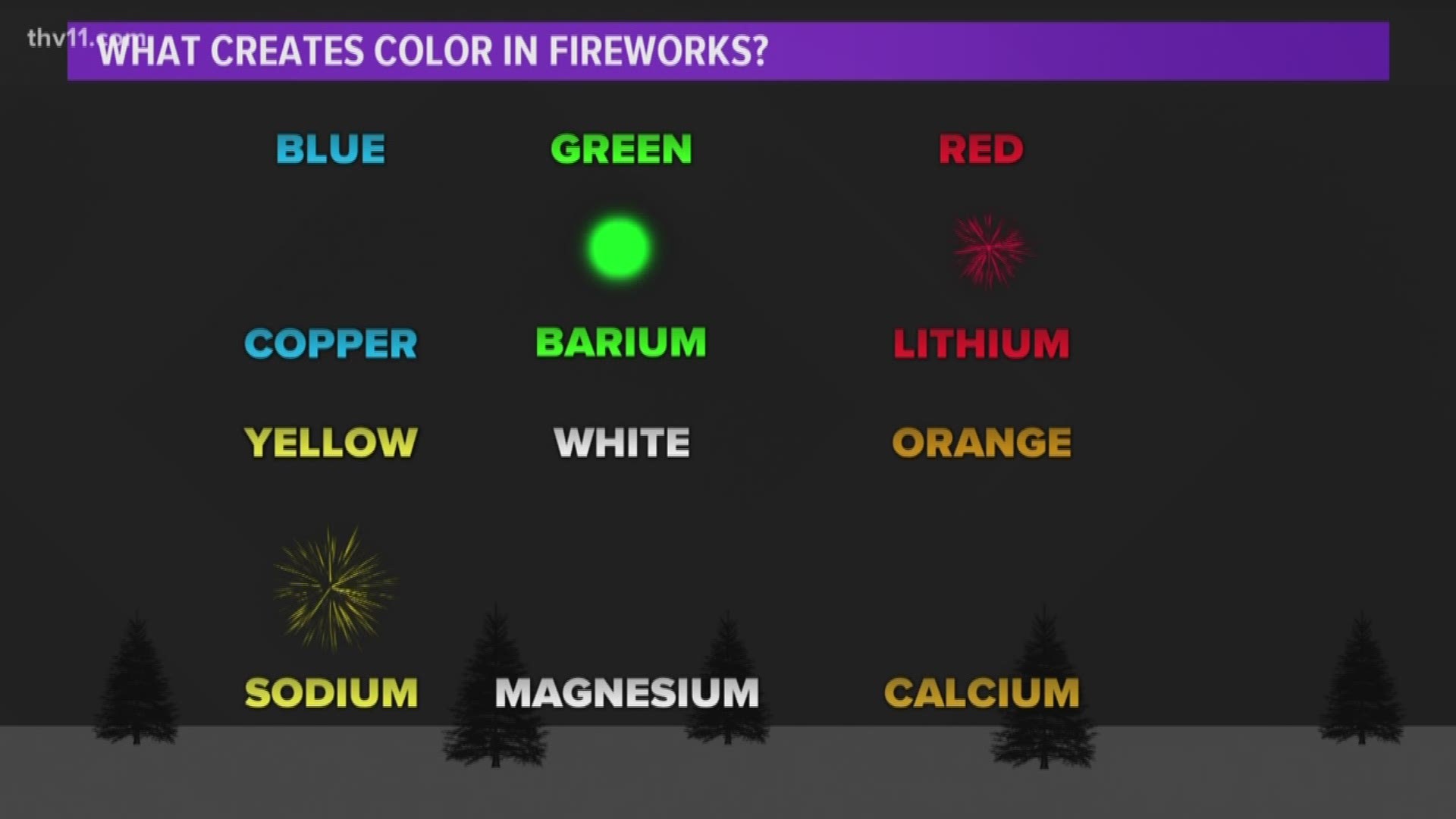When you see the dazzling display of fireworks this week across Arkansas you are witnessing a fantastic display of the science of chemistry at work.
The explosions that leads audiences to ooh and ah are created by specific materials which determine the colors, brightness, and sometimes shapes of each firework.
"A firework is a cylinder filled with gunpowder and then metals that just shine brightly colored when they heat up,” said UCA Assistant Professor Greg Naumiec.
The gunpowder is the fuel to launch the object high in the sky.
The spectrum of colors come from the pyrotechnic stars, that contain certain chemical compounds, placed in a pattern of the gunpowder. When the metals are exposed to the flame a chemical reaction takes place producing the vivid colors.
Here are some examples of what elements in the compounds are used to produce colors.
Copper is used for blue fireworks, lithium is used for red fireworks, magnesium creates very bright white, sodium equals a gold or yellow color, green is displayed by burning barium and orange comes from calcium.
Combinations of these compounds are used to produce other colors like a pink or purple, Naumiec said.
To create a shape like a heart or a circle, the stars are arranged in a key pattern so when the explosion takes place the burning metals will display a shape.
If the stars are not aligned correctly then you may see what is suppose to be a heart, become a circle instead.

